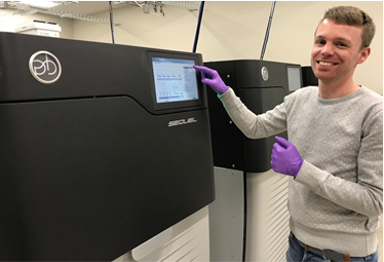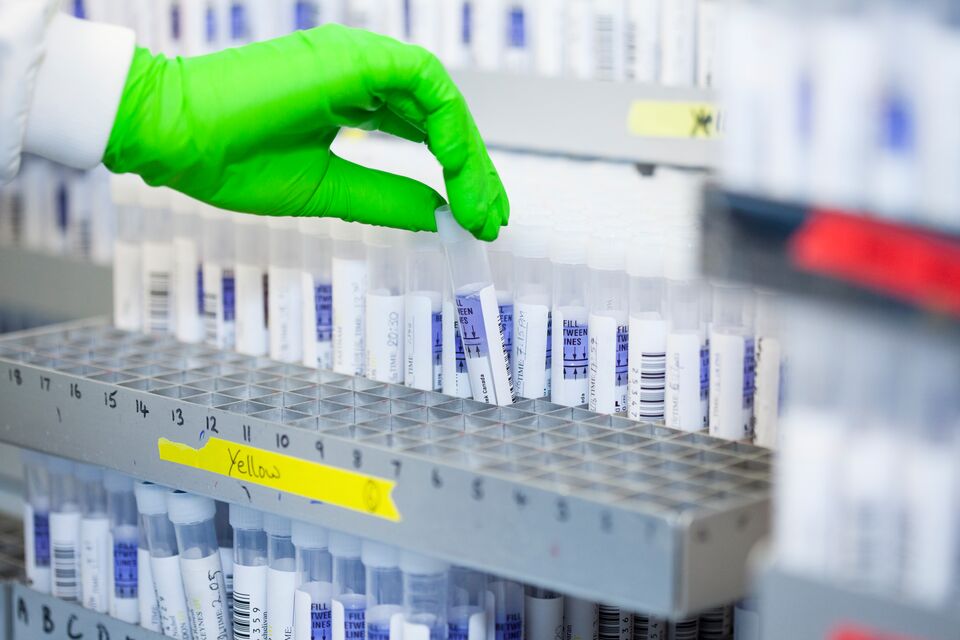When our charity began back in 1974, we relied on basic borrowed lab equipment to add donors to our register and stored their tissue type records in shoe boxes. Since these humble beginnings, we have worked constantly to be at the forefront of transplant technology and research to help us find the best possible match for every patient.
In this blog, we interviewed Dr Neema Mayor, our Head of Immunogenetics Research about how ‘Sequel’, the biotechnology company PacBio’s new DNA sequencing system, will help us improve our matching process and save more lives. Installation of this machine, which allows us to sequence variations in our HLA genes in more detail than ever before, has been made possible through a generous grant from the Wolfson Foundation.

How would you explain the process of matching patients with donors, and why is it so important?
For a transplant to take place, we need to find a donor whose tissue type closely matches the patient’s. Matching is based on our human leukocyte antigen (HLA) tissue type. These genes are very important in helping our immune system decide which cells in our bodies are healthy and which need to be destroyed when they are either infected or have become cancerous.
When donated stem cells are given to a patient, the HLA genes need to be as well matched as possible. This is to prevent the donor’s cells from attacking the patient’s cells because they recognise them as different, which can lead to complications like graft versus host disease (GvHD).
When it comes to matching, we routinely look at the six most important HLA genes. But at the Anthony Nolan Research Institute, we are sequencing additional genes to understand how they can influence transplant success through our ‘Patient/Donor Project’.
What is the Patient/Donor Project and how are our DNA sequencers critical to this research?
The Patient/Donor Project is an on-going study of patient and donor samples from over 2,500 transplants. We take DNA samples from each pair and analyse a variety of HLA and non-HLA genes at ultra-high resolution using DNA sequencers to see how genetically similar or different they are. We then look to see which differences or mismatches have the greatest influence on transplant outcomes.
This project has been fundamental in improving many aspects of the matching process including the importance of matching for the HLA-DPB1, the most recent HLA gene added to our donor selection process, cytomegalovirus (CMV) status, the benefit of using younger donors and which DNA mismatches can be tolerated more than others.
Why did we need to invest in new technology?
The old system was originally chosen because it could read individual long sequences of DNA. However, we are now at the point where we want to capture entire gene sequences and the older technology struggles to do this for some of the longer and more complex genes we want to study.
The new PacBio Sequel System is designed specifically to make this possible. The chemistry used in the sequencing reaction has also been improved to reduce errors, especially when reading stretches of DNA made from the same base (the building blocks of DNA known as A, T, G or Cs). Successfully applying for a Wolfson Foundation grant made purchasing this vital piece of equipment possible. We are so pleased they recognise the importance of our research and are willing to support Anthony Nolan.

How long does it take to analyse a sample and how many can be analysed at once?
Although it takes slightly longer to perform a sequencing run on the new machine, we can test far more samples at once. The sample chips used previously had 150,000 wells, meaning we could track 150,000 sequencing reactions at once. With this more advanced technology, Sequel’s new chips contain 1,000,000 wells! That means we can collect data on a scale that hasn’t been possible before.
Has there been many challenges in getting Sequel up and running?
Sequel has required us to change many aspects of how we work, from how we prepare DNA samples for sequencing to how we analyse and store the data.
Since the switch, we generate a lot more data. The old system would produce around 5-10Gb of data per chip, but Sequel can create up to 150Gb per chip, and we can run eight chips at once. This is a huge increase in the volume of data we need to process, so we have developed a new hybrid approach that uses both our own servers and cloud-based computing. Our Bioinformatics team has worked hard to create systems that allow us to analyse our data in the cloud – making the whole process cheaper and more efficient.
How will this new technology benefit Anthony Nolan’s patients in the future?
Our main belief is that if we can match patients and donors more accurately, it will improve transplant outcomes. Sequel will allow us to sequence the entire length of the most important HLA genes at ultra-high resolution for the first time. This will feed into the Patient/Donor Project so we can see how newly identified DNA mismatches influence transplant success rates.
We will also look at other HLA genes, including HLA E, and non-HLA genes to see if considering them in the matching process improves outcomes. Matching these new genes may allow us to off-set the negative effects of HLA mismatches, when a fully matched donor is not available for a patient.
We’re incredibly grateful to the Wolfson Foundation whose kind donation has made this next stage in our exciting research possible. We’ll keep updating on our progress and how this research helps to improve transplant outcomes for our patients in the future.
If you want to know about the lifesaving research at Anthony Nolan, head to Our Research section to find out more.
